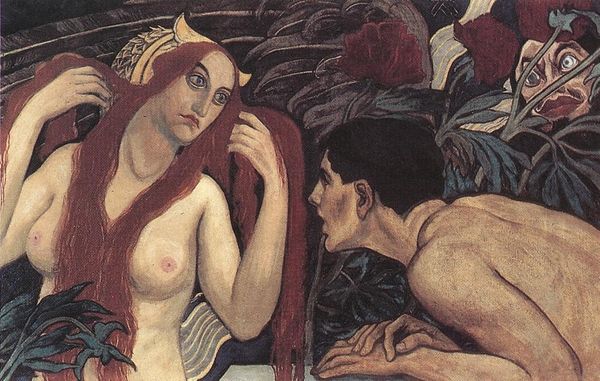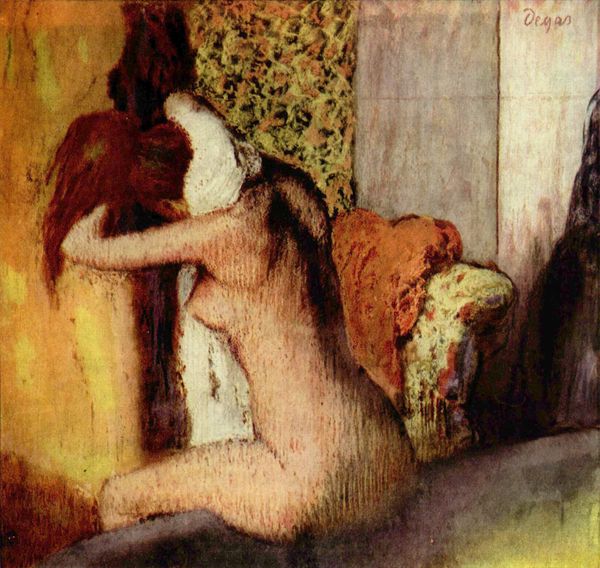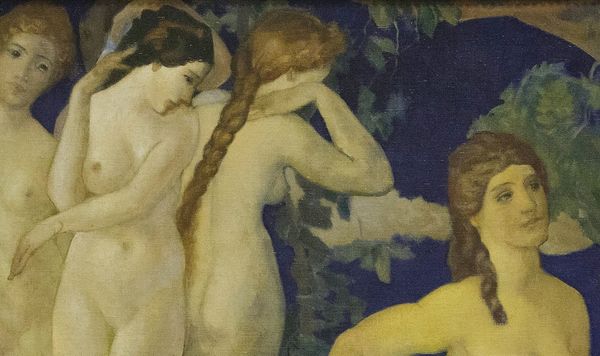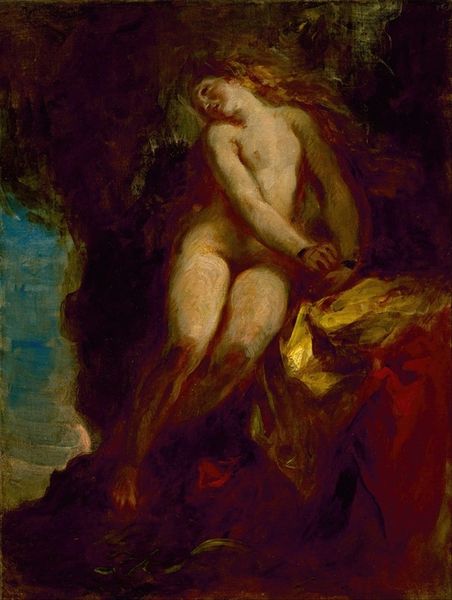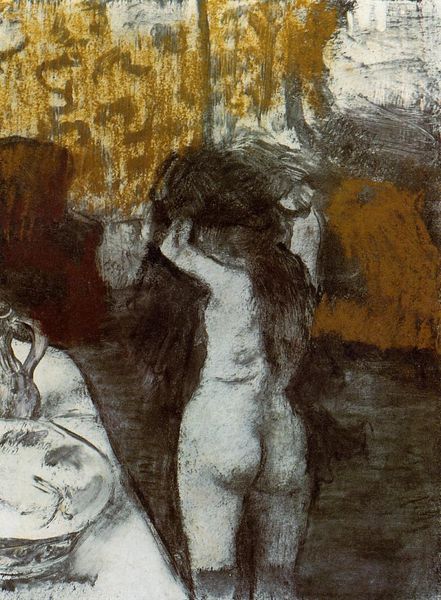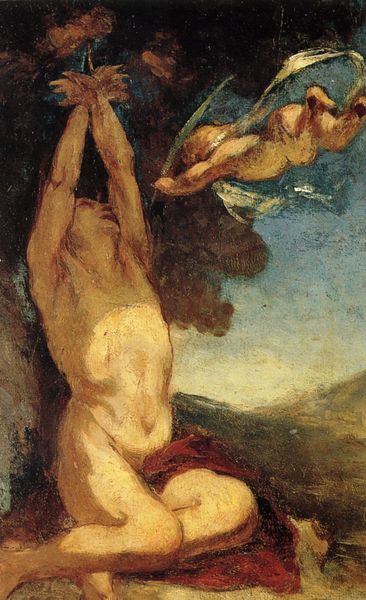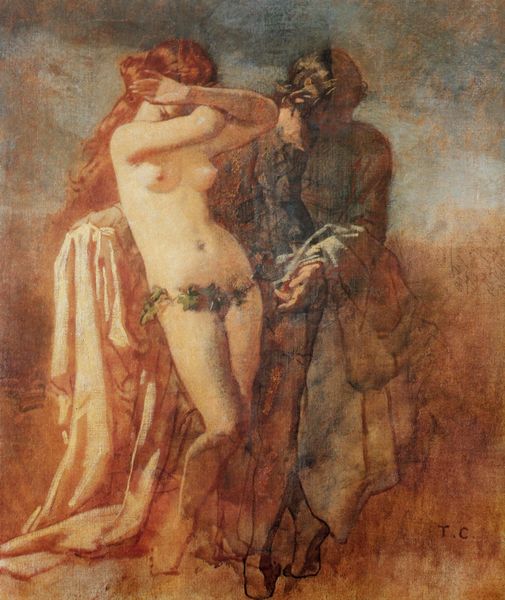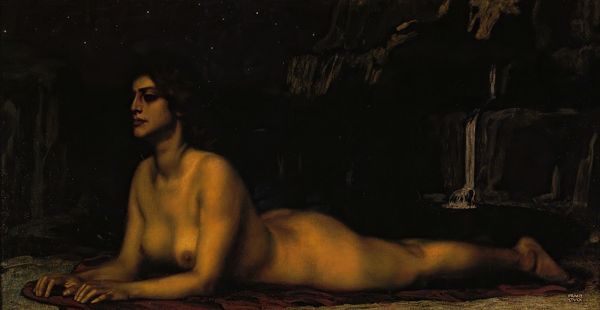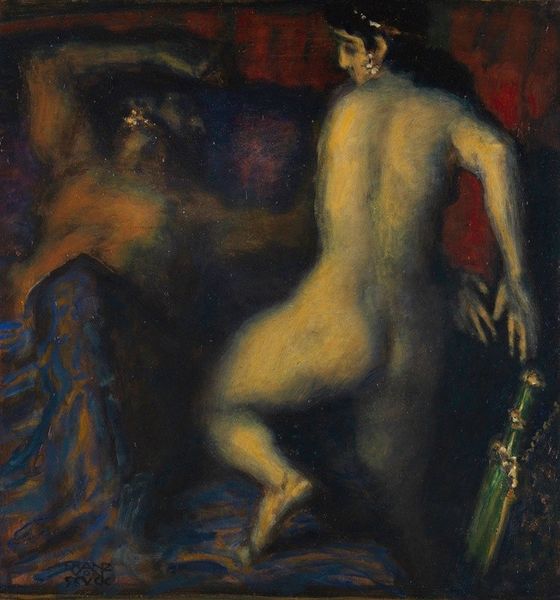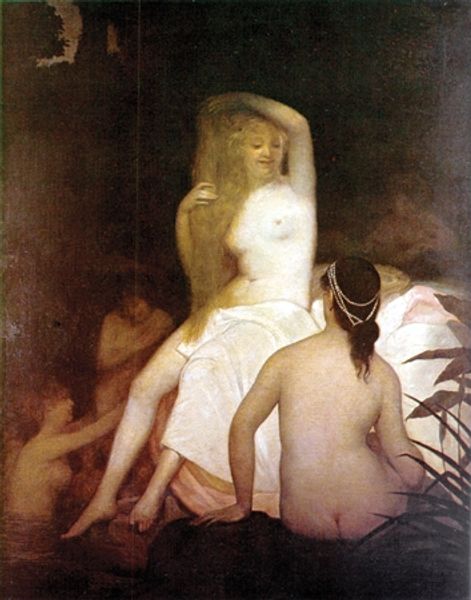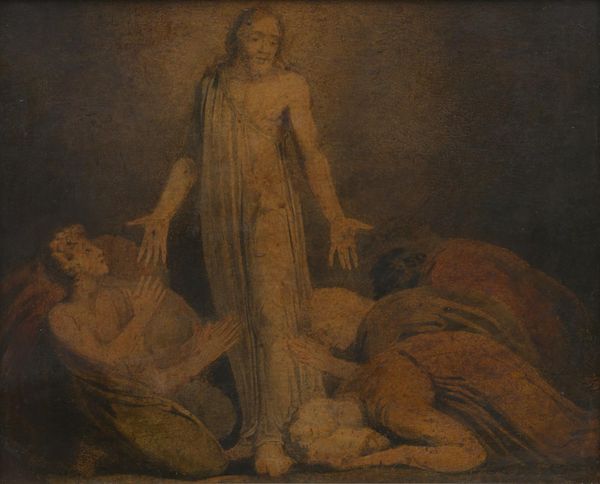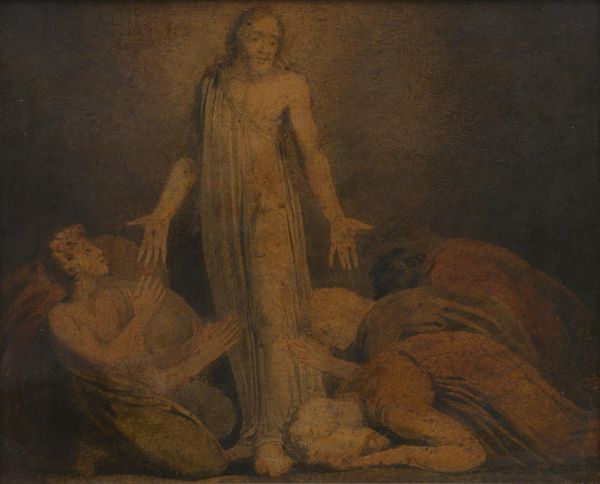
Dimensions: 82 x 74 cm
Copyright: Public domain
Editor: This is Franz von Stuck's "Judith and Holofernes," painted in 1927 with oil. It strikes me as very dramatic, even theatrical, with its bold red backdrop and stark contrast between light and shadow. What historical weight does this depiction carry, and how did it function within its cultural moment? Curator: Well, depictions of Judith and Holofernes have a long and complex history, deeply embedded in power dynamics and moral anxieties. Considering that von Stuck painted this version in 1927, we have to think about the social climate of the Weimar Republic. What kind of challenges did society have at that time? Editor: I recall that period in Germany was unstable. After the first world war, and it seems to me that gender roles, sexuality and violence might have been viewed differently from the recent Victorian age, for instance. Curator: Precisely. Post-war society saw shifts in gender roles. So, Judith, often interpreted as a figure of righteous female empowerment, could be seen with different eyes. Now, in your opinion, does von Stuck celebrate Judith, or is there a critical reading we might consider? Editor: Her almost nonchalant posture suggests a sense of detachment after this brutal act, perhaps a critique of the violence, rather than an endorsement of Judith’s act, don't you think? It also reflects maybe the role that Germany had in that violence and the guilt that resulted from it. Curator: Interesting point! It reflects a kind of disillusionment of moral grounds. Von Stuck shows us how potent myths can become implicated in the complex history of interwar Europe. This art gives space for discussing society. Editor: I hadn't considered that angle before! Thanks for highlighting the layers of socio-political history embedded within it. Curator: Indeed, context is always key to fully appreciate an artwork and learn something about our history and the public role of this form of expression.
Comments
No comments
Be the first to comment and join the conversation on the ultimate creative platform.
